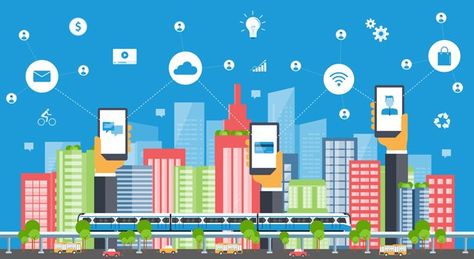
Contents
Smart Building Implementation: Lessons Learned and Future Outlook
Introduction
The implementation of smart building technologies has gained significant attention in recent years. This article aims to explore the lessons learned from smart building implementations and discuss the future outlook of this growing industry.
Historical Background
The emergence of the Internet of Things (IoT) and advancements in building automation systems have paved the way for smart building implementations. Early adoption and key milestones have shaped the development of these technologies, revolutionizing the way buildings are designed and managed.
Key Concepts and Definitions
Smart buildings are characterized by their ability to leverage IoT, sensors, data analytics, and energy management systems to optimize performance and enhance occupant comfort. Understanding these key concepts is essential in comprehending the lessons learned from smart building implementations.
Main Discussion Points
Lessons Learned in Planning and Designing Smart Buildings
Involving stakeholders from the beginning is crucial to ensure the success of smart building projects. Integration of various systems and technologies requires careful consideration, and strategies for optimizing space utilization and occupant comfort play a vital role in creating efficient and user-friendly environments.
Lessons Learned in Implementing and Managing Smart Building Technologies
Retrofitting existing buildings with smart technologies poses challenges that need to be addressed. Best practices for selecting and implementing scalable and interoperable systems must be followed. Continuous monitoring, maintenance, and updates are also essential for the long-term success of smart building technologies.
Lessons Learned in Maximizing Energy Efficiency and Sustainability
Leveraging data analytics to optimize energy consumption is a key strategy in maximizing energy efficiency. Case studies showcasing successful energy management initiatives provide valuable insights, while integrating renewable energy sources presents challenges and lessons learned for a sustainable future.
Case Studies or Examples
Real-world examples of successful smart building implementations demonstrate the practical applications of these technologies. Notable case studies highlight innovative approaches and valuable lessons learned from various industries and sectors.
Current Trends or Developments
Recent trends and advancements in smart building technologies continue to shape the industry. Research findings related to energy savings, occupant satisfaction, and cost-effectiveness provide valuable insights into the benefits of these technologies.
Challenges or Controversies
Common challenges in smart building implementations include data security and privacy concerns. Addressing these concerns is crucial to gain the trust of stakeholders. Controversies and differing viewpoints regarding the economic viability and long-term sustainability of smart buildings also need to be discussed.
Future Outlook
The future implications of smart building technologies are vast. Integration of artificial intelligence and machine learning in smart building systems is a growing trend that holds immense potential. Exploring emerging trends and advancements can provide valuable insights into the future of this industry.
Conclusion
In summary, the lessons learned from smart building implementations are crucial in shaping the future of this industry. Continuous improvement and adaptation are essential in the rapidly evolving field of smart buildings.